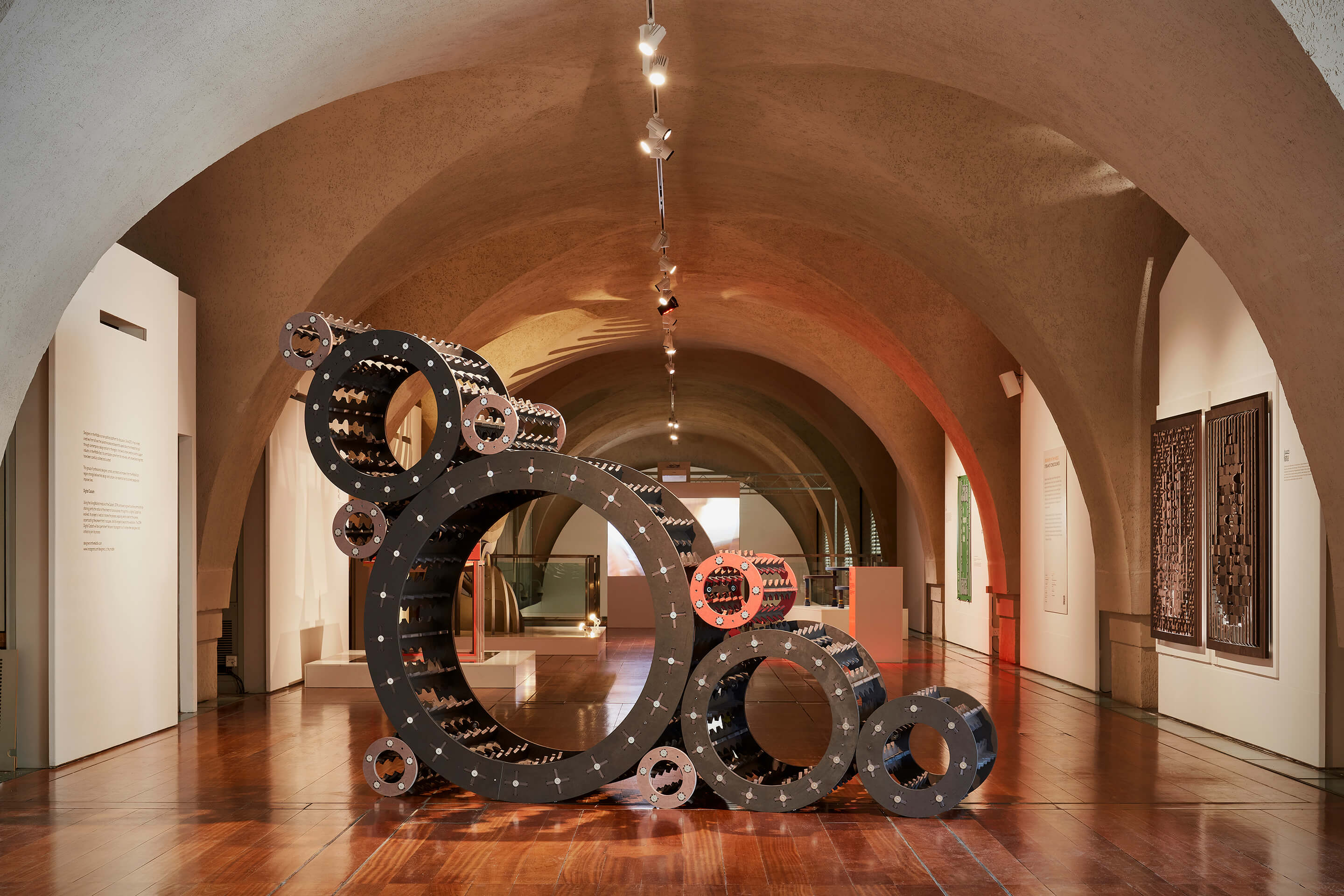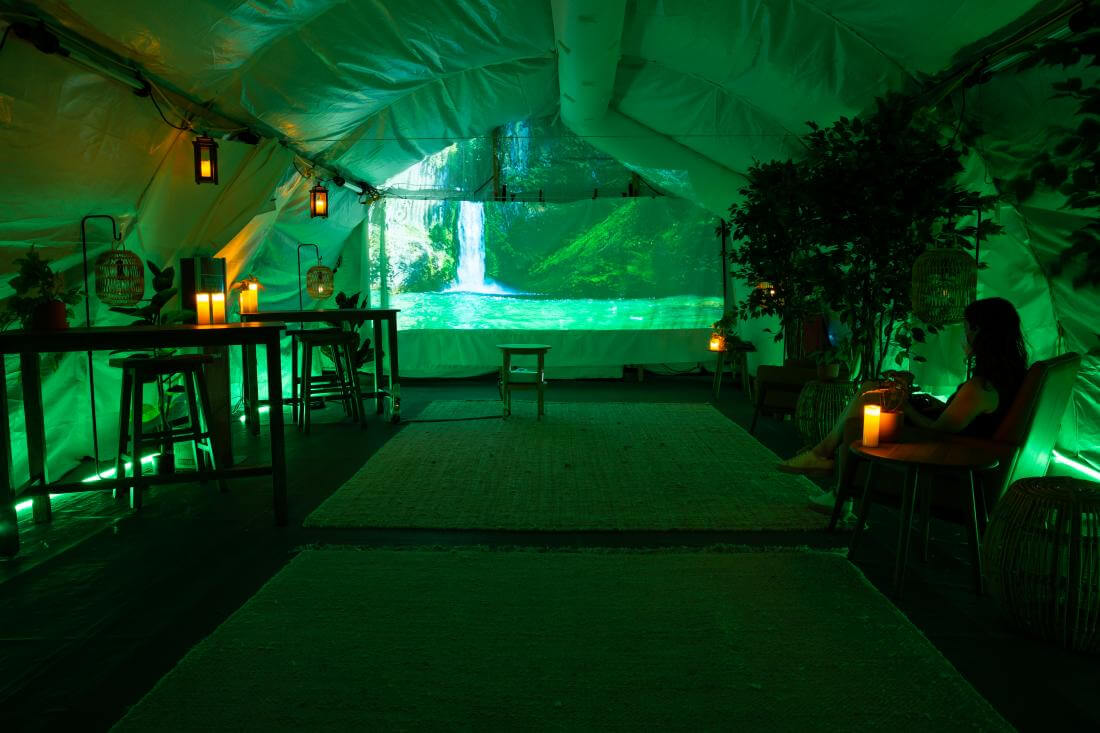If you’re looking to skip Venice this year, London may be your best bet. Despite not being the OG architecture Biennale, the 2021 London Design Biennale (LDB), hosted in Somerset House, is offering equally good weather this year, plus a feast of design and architecture spectacles to gorge on from representative nations and geographical regions. Postponed last year after the COVID-19 pandemic caused lockdowns around the world, the third LDB now runs through to the end of June—here’s what to check out for 2021.
Forest for Change
This year, LDB artistic director, the artist and stage designer Es Devlin, invited participants to respond to the theme of “resonance.” “Everything we design and everything we produce resonates,” said Devlin. “Each idea we generate has the power to reach a mass digital audience undreamt of by previous generations, while the lifespans of the physical products we create often endure long beyond our own. Whether in the social media feeds of millions or in the bellies of marine animals, our ideas and our objects stick around.”
When taking the position of Artistic Director of the Biennale, Devlin was informed that trees were originally banned from the courtyard of Somerset House—the 250-year-old neoclassical building which has hosted the LDB since it began in 2016. So naturally, Devlin has filled the space with a forest.
This is the first time the courtyard has seen such flora—400 trees in total—and it’s quite a spectacle; already birds and insects have made it their home. The forest’s purpose, according to Devlin, is to “counter [the] attitude of human dominance over nature, by allowing [it] to overtake the entire courtyard.” As the move to green cities gains further traction, Forest for Change hints at the green potential of urban environments, particularly in places where such vegetation is (or in this case, once was) not welcome.
Canada: DUCkT
Who thought air ducts could be so cool, so glamorous? The Vancouver-based Revery Architecture and Canadian designers Venelin Kokalov, Mark Melnichuk, and Kimberley Glauber certainly think so. (And they’re not the first either if you remember PUP Architects’s giant H-VAC from 2017). The Canadian installation, much like PUP, invites Londoners to reflect on what ducts can do for them. In a planet with increasingly drastic weather, they help keep us cool and warm when we need but emit billions of tons of CO2 in the process. Furthermore, as our planet’s population grows, more people will require thermal comfort, creating something of a feedback loop.
However, the devices that placate our temperature demands are seldom seen, often tucked away out of sight despite their impact on the planet being so significant. Here, that’s not the case as audiences are confronted with two, oversized, ducts which stretch across a gallery inside Somerset House. As ducts go, they’re rather lavish, made using shiny, golden aluminum metal. Visitors can’t ignore them either, as they have to duck beneath them and in doing so hear and feel them too.
Through DUCkT, its designers pose the following questions: Are we willing to accept varying indoor temperatures that respond to seasonal changes? Can architecture fundamentally shift away from its reliance on mechanical systems and the vast energy currently required to make buildings habitable? Should we continue to rely on these systems to create comfortable yet ineffective internal micro-climates at the expense of our planet?
Germany: Spoon Archaeology

The spoon has been the subject of fascination among more than you might expect. Legendary typeface designer Adrian Frutiger said in 1990, “If you remember the shape of your spoon at lunch, it has to be the wrong shape.” Critic Reyner Banham also weighed in on the spoon with slightly more aplomb: “There is almost nothing a designer can do to a spoon, except fuck it up.” Both commenters were right, but seemingly, spoon designers have been undeterred and have subsequently produced millions of spoons. The problem today, however, is that many of these are plastic—plastic which ends up either in landfills or the sea.
Taking control where designers have not, the E.U. has stepped in to ban single-use plastics, such as the spoon, effective this year. To designers Peter Eckart and Kai Linke, this represents the end of an era and Spoon Archaeology displays disposable spoons as archaeological artifacts worthy of exhibition. Here there are spoons of all shapes, sizes, and colors, and together they make quite an aesthetically pleasing display.
The showcase of spoons is also countered by videos that demonstrate alternatives and how different cultures eschew the spoon while eating, using their hands for example.
Designers in the Middle: Stream of Consciousness

Participants from the Middle East, including Israel, Kuwait, Lebanon, Palestine, and Qatar, have come together for Stream of Consciousness, an exhibit where each participant has produced a wooden object—be it a piece of furniture or other home accessories—to highlight different cultural norms and forms while also being a nod to how the pandemic forced many to work from home, to create a room full of engaging objects.
Found within Stream of Consciousness is ‘Da’irah’ (meaning circle)—a playscape comprising circular forms sampled from gypsum extrusion factories in Kuwait, all chosen by local makers as the factories strive to meet the demand for supposedly exotic Western luxury. Another design sees a ping pong table double up as a space divider and even a door, with the ping pong net employing a pattern akin to a mashrabiya, a typical Islamic architectural motif of the heavily patterned lattice. Visitors can also find a Rujum (stone pile) something which those from the ancient Arab civilization of Nabataean once used for navigational purposes, but which here can be used to stand, sit and climb on.
New York City: Recharge Room

Last year saw New York City become the flashpoint of the pandemic as scenes of refrigerated trucks queuing up outside hospitals as makeshift morgues horrified many. This experience didn’t just haunt the public, though—first responders had to deal with it as well, something which New York-based Studio Elsewhere address with Recharge Room. The studio worked with scientific and clinical partners at Mount Sinai Hospital in New York to develop multisensory healing environments, which build upon Elsewhere’s research into mental wellbeing for frontline medical workers and caregivers.











